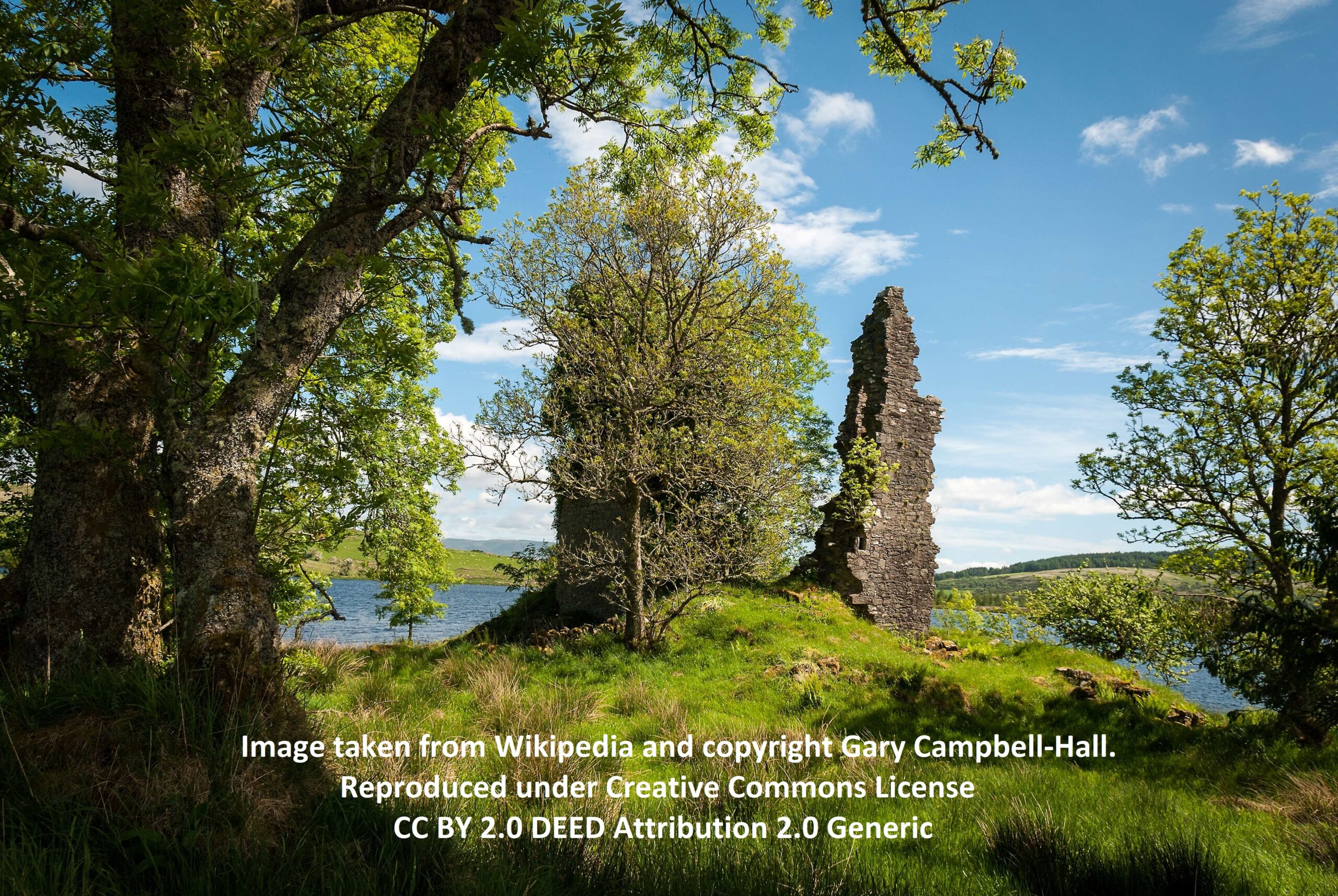Ascog Castle Cowal

Ascog Castle Cowal Details
Asgog Castle, ruins of C15 tower of the Lamonts destroyed by Campbells C17. Not to be confused with Ascog on the Isle of Bute
- Closest To: Kames
- Access: S.O.A.C. Public Access
- Grid Reference: NR947705
Ascog Castle Cowal is a ruined tower house overlooking Ascog Loch on the Cowal peninsular. The loch has a higher water level today than when the castle was occupied, so the location cannot fully be understood in context.
This part of the Cowal peninsular was occupied by the Lamont family as early as the reign of David II, when it was called Ardlamont. A Finlay of Ardlamont (a “cousin” of the head of the clan) is known to have existed in 1433, and in 1472 Ardlamont and Ascog are recorded as being lands held as part of the barony of Inveryne and from John Lamont. A Robert Lamont of Ascog is known from 1477, 1498, 1516 and 1520 and two John Lamonts followed him, the first perhaps Robert’s grandson was active from 1540, and the second from 1557 until 1616. The earliest mention of a castle at Ascog is a charter of 1581, which mentions John as still alive, and his sons Robert and another John. In 1618 a new entail restricted inheritance to Robert’s heirs-male. Although Robert had a working relationship with the dominant Campbell family, during the civil wars this fell apart, and in 1646 the castle was assaulted and destroyed by Campbell soldiers, and was never repaired. After the Restoration of Charles II – and the execution of the Campbell Marquis of Argyll, Ascog returned to Lamont hands, but the castle must have been beyond repair.
The 1938 Lamont Clan by Hector McKechnie states that the tower was square, with a courtyard wall and round tower attached – but no trace of this can be seen, and the tower is clearly rectangular, with the SE (loch-facing) wall destroyed. McKechnie also asserts that the tower is early 15th century – but architecturally it seems later than this. The basement was vaulted, with splayed windows in the SW gable and NW wall, and the NE gable contains a mural chamber entered from the basement, and a second, which is is sunken down with a corbelled vault, perhaps a prison. A small passage leads to this sunken chamber, and to a mural stair leading upwards. There were two floors above, but little can be said of the layout save that the NW angle contained a garderobe, and a mural stair led from the second floor to the wallhead. There are similarities between the tower of Ascog and that at Kilchurn, which is considered mid 15th century, and whilst no evidence of the courtyard or round tower can be seen today, it is possible that McKechnie was able to see evidence of them before the water levels in the loch rose. Access today is via a footpath which bypasses the adjacent cottage gardens.
Become a supporter of my work to access a more detailed history